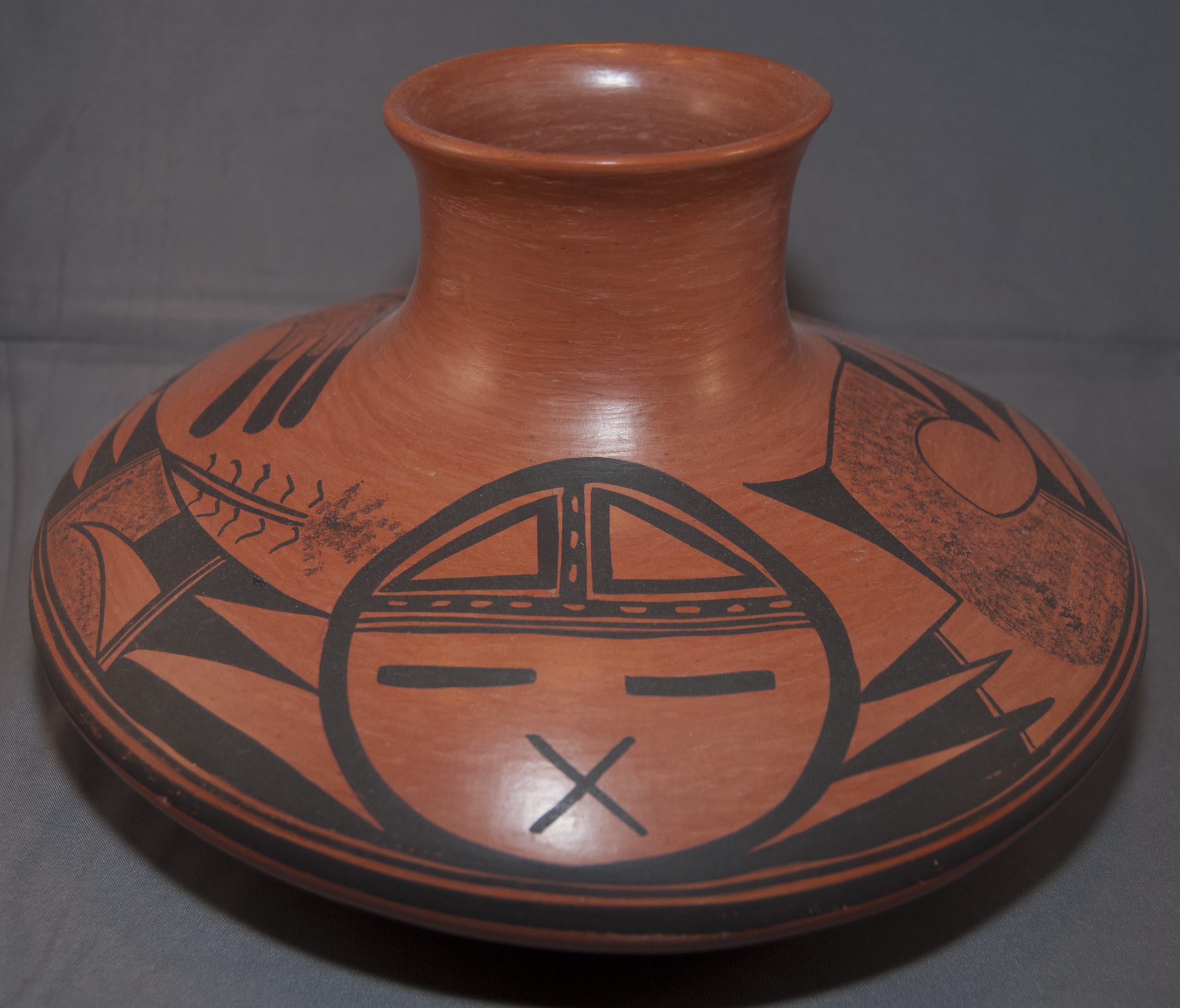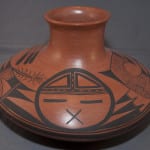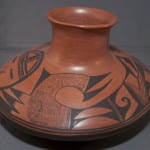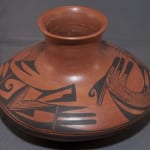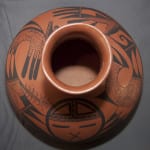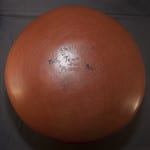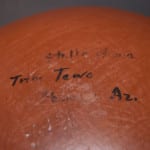I have had a particular fondness for Stella Huma since meeting her at the 1986 Indian Market in Santa Fe and spending time with this gentle woman in her booth. If I remember correctly, she won “Best of Show” in the “Traditional Pottery” division that year. Perhaps because of her exceptionally smooth polishing, her best pots seem to glow with an inner light that is distinctive and appealing. (For other pots by Stella Huma, see the Index of Artists.)
Even by these high standards, jar 2011-17 is exceptional. Although made of the difficult-to-work sikyatska clay (fires red), the walls are exceptionally thin and the pot is quite light for its size. The particularly wide-shouldered “flying saucer” shape of the body of 2011-17 is very difficult to form without collapsing. The wide shoulders sweep out latterly; the unpainted vertical neck rises from this base, which gives the jar a particularly graceful shape.
Hopi and Hopi-Tewa pots are often painted with the designs in one area of the pot balanced by the same design on the opposite side of the pot. (For saucer-shaped jar with this typical balanced design, see 1983-02.)
In contrast, Stella Huma has painted jar 2011-17 with a series of avian designs that are used only once on the jar. Curvilinear feathers and linear tails sweep around the pot and are compatible, but unique. These designs frame a circular mask of Tawa, the spirit of the Sun Katchina (Branson 1992:94, 186). Emerging from the avian design to the left of the Tawa mask is a stalk of corn ending in a tassel. Feathered designs carry prayers to Tawa asking for a fruitful corn crop: could there be more Hopi (Hopi-Tewa) iconography? I am particularly attracted to monochromatic design since the skill of the painting and design is emphasized without the distraction of color. This jar is a particularly stunning example of this technique.

